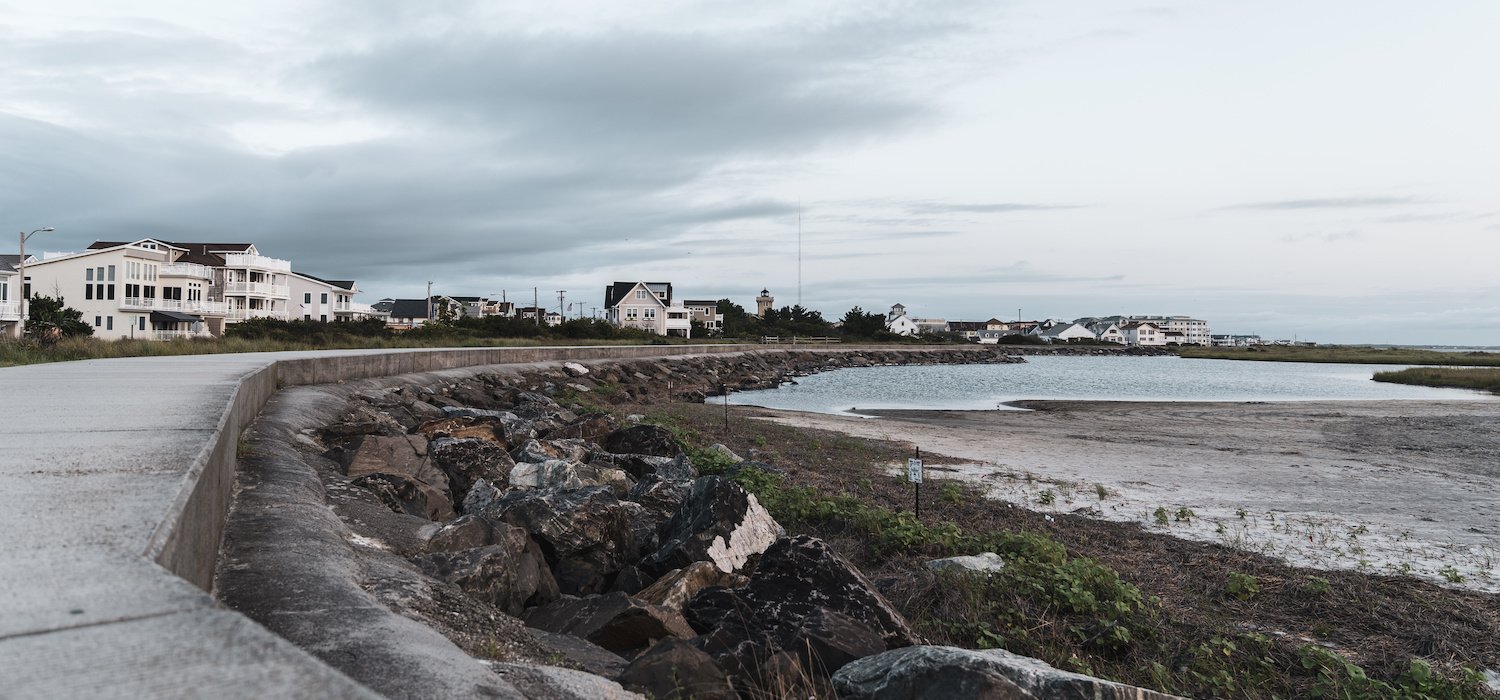New Jersey’s coast plays a vital role in the state’s economy and its residents’ way of life. While these communities have a long history of weathering storms and flooding, sea-level rise and changes in hurricane activity create new risks. This report quantifies the impact of changes in both hazards over the past four decades on flood and wind exposure and expected damage at the individual county level, and explores how New Jersey coastal risk will evolve in the years ahead as the climate changes. We find:
Tidal flooding risk in New Jersey has more than doubled: The nearly six inches of sea-level rise since 1980 has increased the number of current New Jersey homes at risk of frequent flooding by about 110%. There are 23,000 more homes and other buildings worth a combined $13 billion at risk of frequent flooding today than if sea levels had remained at 1980s levels. There are 27,000 more buildings worth a combined $15 billion that are now likely to flood at least once a year.
Hurricane flood risk is also expanding: The frequency and extent of storm surges have increased since the 1980s, meaning more of today’s buildings are now at risk of flooding once during a 30-year mortgage. We estimate between 62,000 and 86,000 more homes and commercial properties, worth a combined value of more than $60 billion, now sit in areas with a 1-in-30 chance of hurricane flooding.
Hurricane risk extends beyond the coasts: While New Jersey’s coastal communities face the bulk of hurricane-driven flood risk, the potential for wind damage from these storms extends inland. Four decades ago, the odds that an average New Jersey home outside the state’s coastal counties would experience hurricane-force winds in a given year was less than 1-in-200. That has grown to between 1-in-30 and 1-in-100.
Rising coastal risk carries significant economic costs: We estimate that the expected average annual loss to New Jersey from hurricane-related wind and flood damage today is likely $670 million to $1.3 billion higher than it would have been if sea levels and hurricane activity in the 1980s remained constant.
New Jersey’s exposure is projected to grow: Based on the same sea-level rise projections used in the New Jersey Climate Change Alliance’s 2016 Science and Technical Assessment Panel Report, it is likely that by midcentury an additional 33,000 to 58,000 buildings in the state will flood frequently. An additional 73,000 to 113,000 buildings worth a combined $60 to $96 billion will likely be in the 1-in-30-year floodplain by 2050. Average annual hurricane wind and flood damage in the state will likely grow by $1.3 to $3.1 billion.
Resilience investments can reduce current and future risk: These projections are not foregone conclusions. Future reductions in global emissions would substantially reduce these hazards in the second half of the century, but that alone will not be enough. Vulnerable communities can better prepare for floods and storm damage by linking planning, mitigation, and adaptation. Zoning can guide development away from at-risk areas. Existing structures can be protected through retrofitting.
Download the full report.



